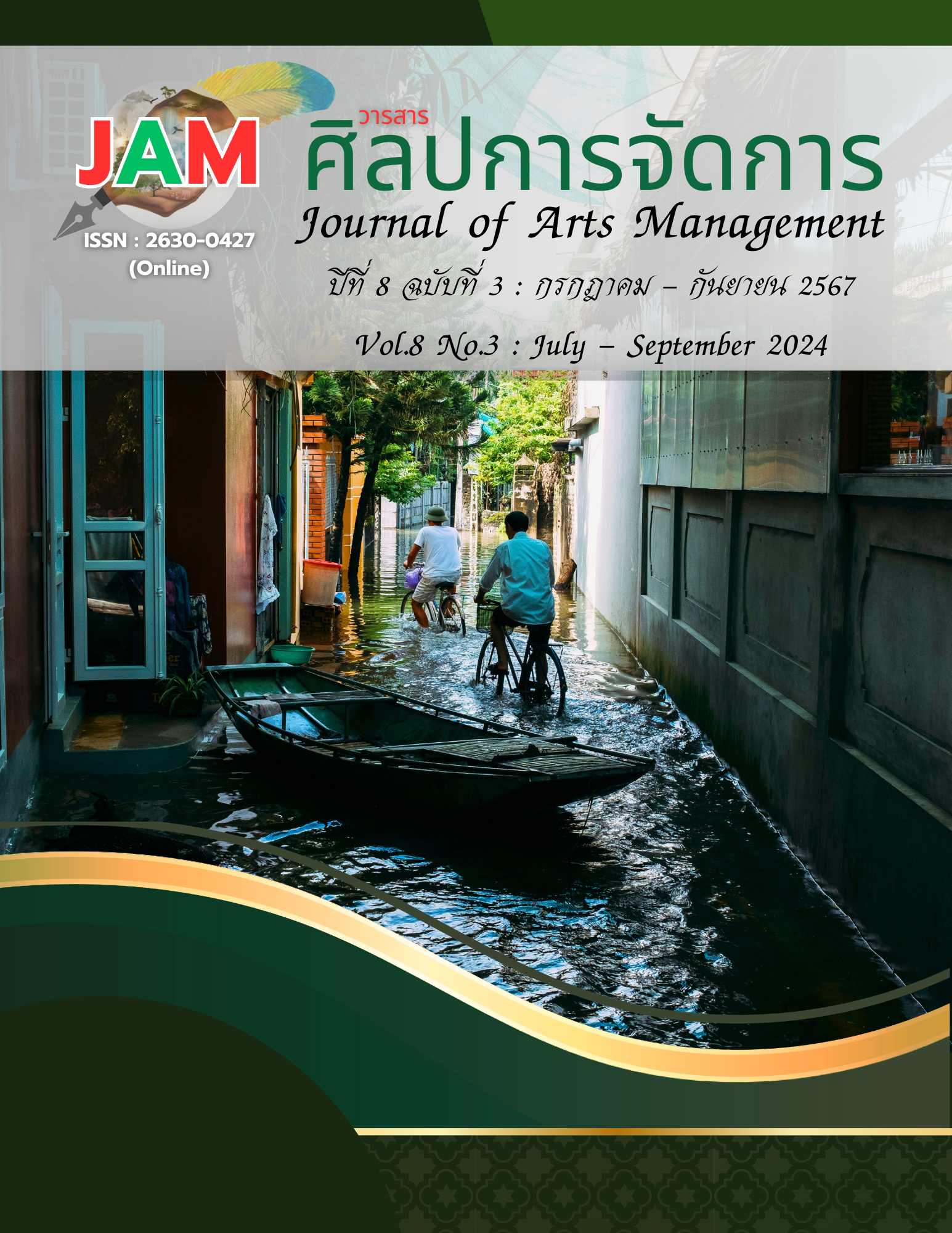Morale and Encourage Performance of Personnel in Triamudomsuksa Suwinthawong School Under Secondary Education Service Area Office 2
Main Article Content
Abstract
This research aims to study the levels of motivation and job satisfaction among educational personnel and to compare the levels of motivation and job satisfaction among educational personnel of Triamudomsuksa Suwinthawong School, Suwintawong District Education Office, and Secondary Education Service Area Office 2. This study employs a quantitative research approach. The data collection tool used is a questionnaire with a reliability level of.94. The statistical methods used for data analysis include frequency, percentage, mean, standard deviation, one-way ANOVA, and pairwise comparison using Scheffe's method. The research findings were as follows: 1) The overall level of motivation and job satisfaction among educational personnel at Triamudomsuksa Suwinthawong School, Suwintawong District Education Office, and Secondary Education Service Area Office 2 was at a moderate level (mean = 3.37). Specifically, the safety and security aspect had the highest mean score (mean = 3.60), followed by the work environment (mean = 3.59). In contrast, the lowest mean score was observed in the relationship with superiors (mean = 3.20). 2) When comparing the levels of motivation and job satisfaction among educational personnel across different personal factors such as gender, age, monthly income, educational level, and work experience, statistically significant differences were not found at the.05 significance level. This suggests that various personal factors did not significantly affect the motivation and job satisfaction of educational personnel at Triamudomsuksa Suwinthawong School, Suwintawong District Education Office, and Secondary Education Service Area Office 2.
Article Details

This work is licensed under a Creative Commons Attribution-NonCommercial-NoDerivatives 4.0 International License.
Views and opinions appearing in articles in the Journal of Arts of Management It is the responsibility of the author of the article. and does not constitute the view and responsibility of the editorial team I agree that the article is copyright of the Arts and Management Journal.
References
Chunhapan, U. (2015). A study of non-formal education teachers’ morale in Chanthaburi, Rayong and Trat Provinces[Master’s thesis, Rambhai Barni Rajabhat University].
Davis, K. (1967). Human relations at work. McGraw-Hill.
Flippo, E. B. (1971). Principle of personnel administration. McGraw-Hill.
Herzberg, F. (2015). Motivation-hygiene theory. In Organizational behavior 1 (pp. 61-74). Routledge.
Herzberg, F., Mausner B., & Snyderman B. (1959). The motivation to work (2nd ed.). John Wiley & Sons.
Intarak, C. (2019). The morale of personnel in Silpakorn University Demonstration School[Master’s thesis, Silpakorn University].
Intawong, N. (2017). Morale and morale in the performance of personnel at Triam Udom Suksa Pattanakarn Ratchada School, under the Secondary Educational Service Area Office 2. Ramkhamhaeng University.
Lewis, D. (1979). Scorekeeping in a language game. Journal of Philosophical Logic, 8, 339-359. https://doi.org/10.1007/BF00258436
Poolpattana, A. (2011). Morale in working of employees at Mahle Engine Components (Thailand) Co., Ltd.[Master’s thesis, Srinakharinwirot University].
Saleh, C. (2017). Morale in job performance of teachers in Sungai Kolok City Municipality Schools[Master’s thesis, Yala Rajabhat University].
Samniang, A. (2017). Morale of government officials in Chonburi provincial administrative organization[Master’s thesis, Burapha University].
Santiwong, T. (1992). Organization and administration. Thai Wattana Panich.
Tojinda, B. (2000). Personnel management. Romsarn.
Triamudomsuksa Suwinthawong School. (2023). Self-Assessment Report: SAR. Triamudomsuksa Suwinthawong School.


